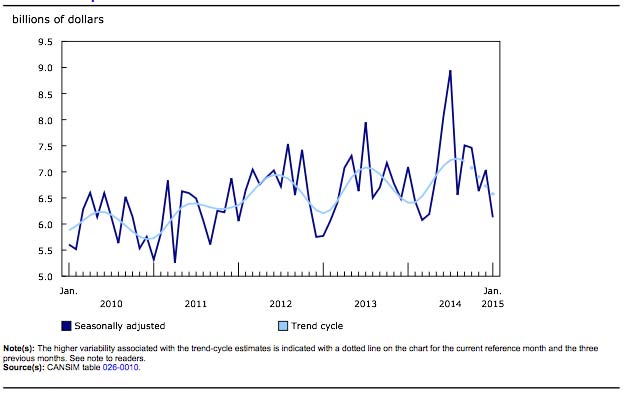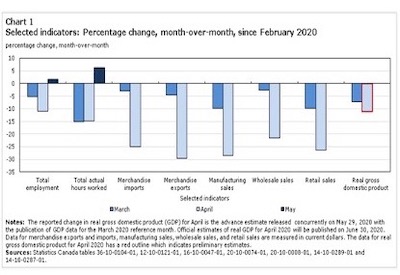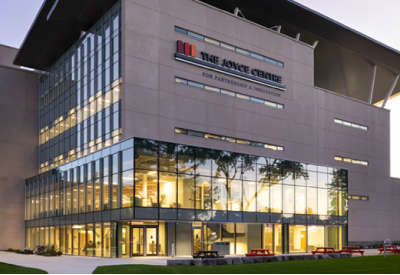Investment in non-residential building construction

Jan 30, 2018
Investment in non-residential building construction totalled $13.7 billion in the fourth quarter, up 1.6% over the previous quarter, marking a third consecutive quarterly increase. Nationally, gains were reported for all three components (institutional, industrial and commercial), led by spending on institutional building construction, up $117.2 million to $3.9 billion.
Provincially, increases were posted in five provinces in the fourth quarter, with Ontario reporting the largest increase, followed by British Columbia, and Newfoundland and Labrador.
Ontario posted an increase in all three components, led by spending on commercial building construction (+$106.3 million), followed by investment in institutional building construction (+$100.3 million) and industrial buildings (+$30.6 million). Gains in the commercial component were driven by the construction of warehouse, refrigerated storage and freight terminals (+$30.5 million), as well as passenger terminals (+$25.8 million). The quarterly increase for the institutional component was fuelled by school buildings (+$54.0 million) and hospital and health care buildings (+$52.5 million).
The increase in British Columbia was driven by investment in industrial building construction (+$21.8 million), led by spending on farm and warehouse building construction. Institutional building construction was up $15.3 million, mainly attributable to increased school building construction.
In Newfoundland and Labrador, non-residential spending in building construction was up 22.5% (+$17.5 million), its largest gain since the second quarter of 2011. All three components posted increased spending, led by construction of industrial buildings (+$9.2 million), largely the result of construction of maintenance garages, workshops and equipment storage facilities.
The largest investment decreases were posted in Alberta and Manitoba. In Alberta, total investment in non-residential construction was at its lowest level since the third quarter of 2013. The drop in Alberta was mainly the result of lower spending on commercial building construction (-$65.0 million). All three components decreased in Manitoba, led by lower spending on institutional building construction.
Census metropolitan areas
Among the 36 census metropolitan areas (CMAs), 24 posted increases in non-residential building construction in the fourth quarter. Toronto reported the largest rise (+$150.7 million), followed by Vancouver (+$29.3 million). The gains in Toronto were mostly tied to commercial building construction, which increased by $86.9 million in the fourth quarter. In Vancouver, all three components contributed equally (approximately $10 million each) to the quarterly increase.
In Eastern Canada, all CMAs reported a rise in investment, led by spending in St. John’s (+$11.5 million) and Moncton (+$6.3 million). The increase in spending in St. John’s was mainly the result of industrial building construction, while in Moncton, the growth was largely tied to construction of institutional buildings. In Halifax and Saint John, the largest quarterly increase in spending was reported in commercial building construction.
A number of smaller CMAs posted strong quarter-over-quarter increases in non-residential construction spending. Investment in the Hamilton CMA increased by $27.8 million to $287.2 million, its highest value since the second quarter of 2014. The rise was mainly the result of spending on commercial building construction.
Greater Sudbury posted a $23.0 million increase in spending (+38.6%) compared with the previous quarter, to a record high $82.5 million. The increase was led by industrial building construction (+$12.6 million).
The London CMA reported an $18.0 million increase in non-residential building construction, to $216.7 million — its highest amount since the first quarter of 2013. The rise was mainly attributable to an increase in spending on commercial building construction.
2017 in review
Total investment in non-residential building construction in Canada increased 1.2% in 2017 compared with 2016. Spending on both institutional building construction (+$380.0 million or +2.6%) and industrial building construction (+$257.5 million or +3.5%) were the drivers behind the total annual increase. Total investment in commercial construction was unchanged from 2016 to 2017.
Among the Atlantic provinces, New Brunswick reported a total increase in spending in non-residential construction of $195.4 million, up 27.5% compared with 2016. Prince Edward Island also had a notable increase in non-residential construction, with a $13.7 million (+11.1%) year-over-year rise reported. In both provinces, the growth resulted mainly from increased spending on commercial building construction. Newfoundland and Labrador, as well as Nova Scotia, each posted approximately $50 million year-over-year declines in non-residential construction.
Total investment in non-residential construction increased in Ontario (+$878.1 million or +4.3%) and Quebec (+$666.2 million or +7.3%) compared with the previous year. In both provinces, investment in commercial building construction posted the largest year-over-year gains compared with 2016.
In Western Canada, Manitoba was the lone province to post an increase in the total investment in non-residential construction, up 8.1% or $140.9 million in 2017, led by higher investment in commercial building construction.
In Saskatchewan, total year-over-year investment in non-residential construction declined 14.8% (-$299.0 million), mainly due to reduced spending on commercial and institutional building construction. Alberta reported a 7.4% year-over-year decrease compared with 2016, reflecting lower investment in commercial and industrial building construction. Total investment in non-residential building construction in British Columbia decreased 2.4% (-$150.5 million) in 2017 compared with the previous year. The drop was led by reduced spending on commercial building construction, down 2.6% (-$103.2 million).
Source: Statistics Canada, http://www.statcan.gc.ca/daily-quotidien/180116/dq180116a-eng.htm?CMP=mstatcan










![Guide to the Canadian Electrical Code, Part 1[i] – A Road Map: Section 52 — Diagnostic imaging installations](https://electricalindustry.ca/wp-content/uploads/2022/11/Guide-CE-Code-2.png)






